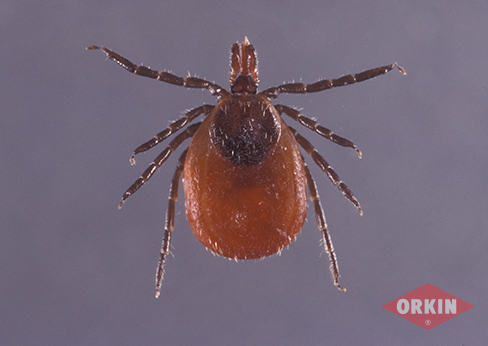Tick Season is HERE!!
With warmer weather approaching, people in Southern Maine are itching to get OUTSIDE to enjoy some hiking and biking and yard work. It may seem too cold for those little guys to come out, but as soon as the snow thaws, ticks come out of hiding.
May is Lyme Disease awareness month, and this is the perfect time of year to remind our community about tick safety
The Maine Centers for Disease Control and Prevention has some amazing resources, I have included the link to the CDC page at the bottom of this page.
Deer Ticks or (Ixodes scapularis) is the only tick known to transmit Lyme disease and it looks like this:


Ticks tend to bite humans in the nymph stage (smaller picture) and must be embedded for 24 hours to infect a person with Lyme Disease.
The other common tick found in Maine is the Dog tick, it looks like this:
Dog ticks do not cause disease. The main difference between a dog tick and a deer tick is the coloring. Do not go by size, they can be the same size or smaller than a deer tick at different stages of its life. The dog tick will have a white area behind its head or 'racing stripes down it's back.
Symptoms of Lyme Disease:
Early symptoms:
can be found anywhere on body and doesn't have to be where the tick was found
-Muscle and joint pain
-Fatigue
-Chills, fever, and headache Swollen lymph nodes
Late Symptoms:
-Arthritis with recurrent, brief
attacks of joint swelling
-Lymphocytic meningitis
-Bell’s palsy
-Encephalitis
-Heart arrhythmias
Prevention is the BEST medicine!!
To prevent a tick bite follow the CDCs No Ticks for Me 4 Step Prevention system:
1. Wear protective clothing
Wear light colors with long sleeves and long pants with socks pulled up over pants and shirts tucked in. Ticks only crawl up and will reach skin at your neck line and hopefully you will see them before they have a chance to embed.
2. Use EPA approved repellant
Use repellants containing
DEET, oil of lemon
eucalyptus, IR3535,
picaridin, or permethrin (be sure to only use this one on clothing and wash these clothes separate from others)

3. Perform Tick Checks Daily
Focus on the warmest areas of your body and do not forget your head, hair, and ears. Always shower immediately after hiking or playing in tick infested areas to dislodge ticks that have not latched on yet, and put clothes in the dryer. (the hot air of the dryer will kill a tick)
4. Use caution in tick infested areas
Stay on the trail
I Found a Tick: Now What?
- Lyme takes 24 hours to transmit, so remove the tick right away with a tick spoon or tweezers
Pull the tick straight out without applying anything first and call your doctor to see what they recommend. Do not worry if some of the tick was left behind in the skin, the part of the tick that transmits Lyme Disease is the abdomen.
You can find more information at the Maine CDC website Maine CDC